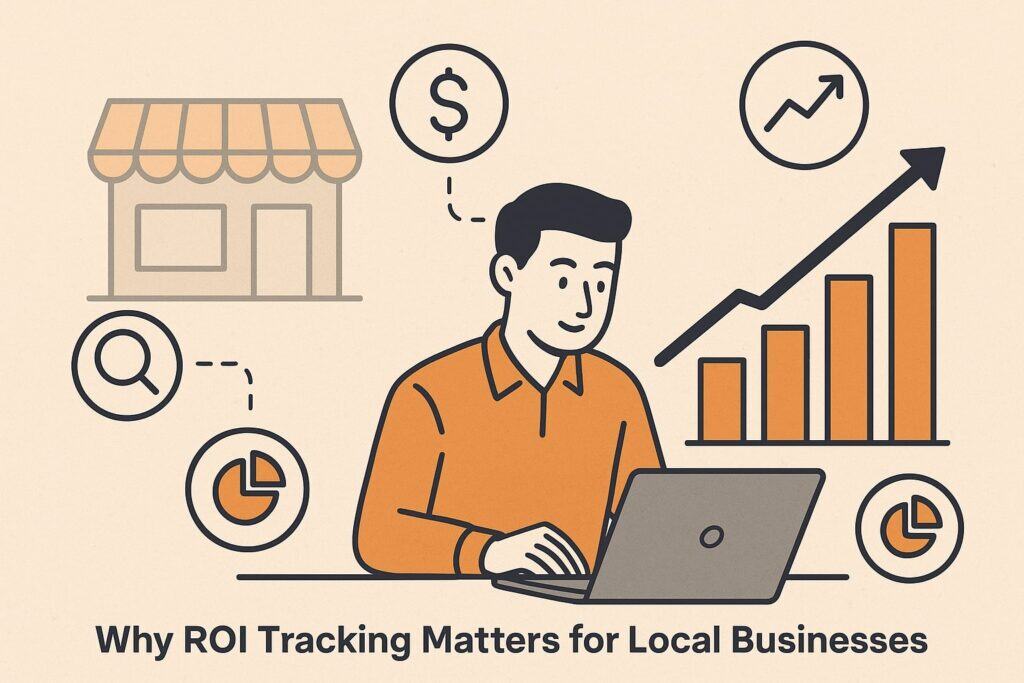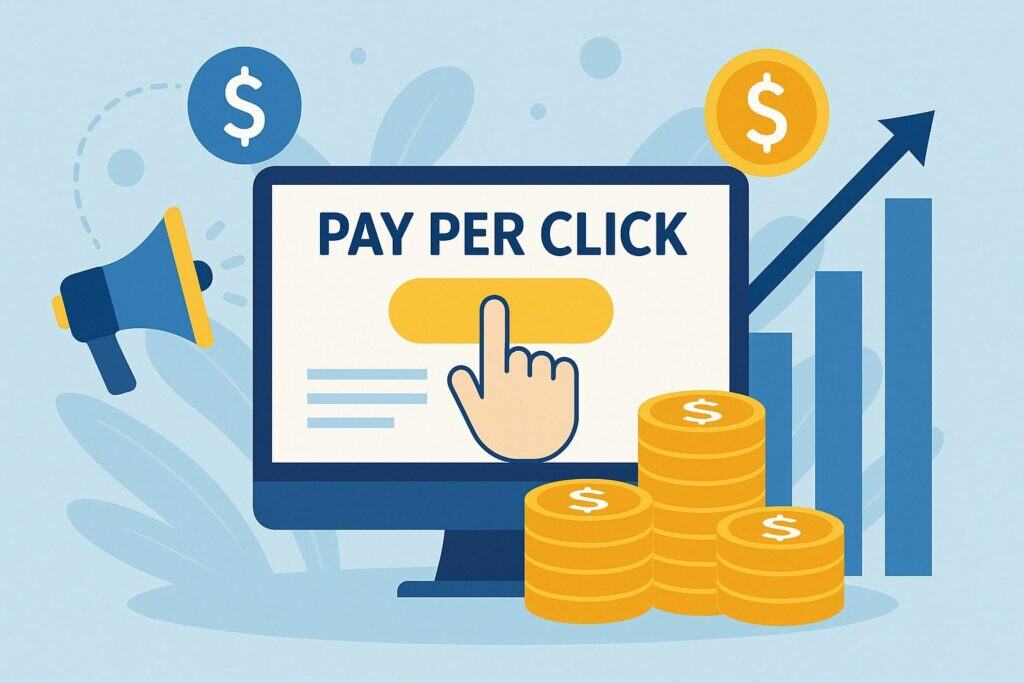
How to Track ROI from Paid Ads as a Local Business
Running paid ads as a local business can be both exciting and intimidating. On one hand, you get instant visibility in front of your ideal customers. On the other hand, every dollar you spend must bring measurable returns—or you risk wasting precious budget.
The key to long-term advertising success lies in being able to accurately track ROI (Return on Investment) from paid ads. Without it, you’re essentially driving blind, unsure whether your marketing spend is helping you grow or draining your resources.
In this guide, we’ll walk through everything a local business owner needs to know about tracking ROI from paid advertising campaigns.
From understanding what ROI actually means in a local marketing context to choosing the right metrics, setting up tracking systems, and analyzing results, this article will serve as a comprehensive roadmap.
Why ROI Tracking Matters for Local Businesses

For large corporations, marketing budgets are often flexible and spread across multiple channels. But for local businesses, every dollar counts. ROI tracking ensures that money spent on ads translates into measurable business growth.
When you know your ROI:
- You make smarter decisions: You can increase budgets for campaigns that work and cut spending on those that don’t.
- You understand customer behavior: ROI analysis shows you which ads bring new customers and which ones drive repeat business.
- You compete effectively: Even with a smaller budget, precise ROI tracking allows you to outperform competitors who guess at results.
- You grow sustainably: Without ROI tracking, scaling paid advertising is a gamble. With it, growth becomes predictable.
For example, consider a local restaurant running Google Ads to promote weekend specials. If the restaurant spends $500 and gets $2,000 in sales directly attributable to the ads, the ROI is strong, and scaling up makes sense. But if the same spend only results in $300 in new business, the strategy must change immediately.
In essence, ROI tracking transforms advertising from a “cost” into a strategic investment.
Understanding ROI in Paid Advertising

ROI, or Return on Investment, is a financial metric that measures how much profit you earn from your marketing spend. The formula is simple:
ROI = (Revenue – Cost of Ads) / Cost of Ads × 100%
But while the formula seems straightforward, applying it in real-world local advertising scenarios is trickier. That’s because ROI is influenced by multiple factors:
- Revenue attribution: Not all customers who see your ad will convert immediately. Some may come in days later, making it hard to directly tie their purchase to your campaign.
- Lifetime value: A single customer might make multiple purchases over time. A $50 ad click that brings in a repeat customer could yield thousands in lifetime value.
- Hidden costs: Paid ad campaigns also require design, management, and possibly agency fees, all of which should be factored into ROI.
For local businesses, ROI is not just about immediate sales—it’s also about building brand recognition and long-term loyalty. That’s why tracking ROI isn’t a one-size-fits-all exercise; it requires a tailored approach based on your industry, audience, and goals.
Setting Clear Advertising Goals
Before tracking ROI, you need to know what success looks like. For some businesses, it’s revenue. For others, it might be leads, phone calls, or foot traffic. Setting SMART goals (Specific, Measurable, Achievable, Relevant, Time-bound) ensures that you can connect ad performance to business outcomes.
Examples of goals include:
- Retail store: Increase in-store sales by 15% from Facebook Ads within 3 months.
- Local dentist: Generate 20 new patient appointments per month from Google Ads.
- Real estate agent: Capture 50 qualified leads per quarter via LinkedIn Ads.
The more specific your goals, the easier it becomes to measure ROI accurately. Without clear goals, you’ll struggle to determine whether your ad spend is working or not.
Choosing the Right Metrics for ROI Tracking

Tracking ROI doesn’t mean looking at every possible metric—just the ones that matter most for your business. Local businesses should focus on a mix of primary and secondary metrics.
Primary ROI Metrics
- Cost Per Acquisition (CPA): How much it costs to acquire a new customer.
- Return on Ad Spend (ROAS): Revenue generated for every dollar spent on ads.
- Customer Lifetime Value (CLV): Average revenue generated by a customer during their relationship with your business.
Secondary Metrics
- Click-Through Rate (CTR): Measures ad engagement but doesn’t directly indicate ROI.
- Conversion Rate (CR): Percentage of users who take the desired action (call, form submission, purchase).
- Cost Per Click (CPC): Useful for budget management but should be tied to actual sales data.
For instance, if a fitness studio runs Instagram Ads with high CTR but no new memberships, the ROI is low despite strong engagement. On the other hand, if another campaign has fewer clicks but results in 20 new sign-ups, the ROI is significantly better.
Tools and Systems for Tracking ROI
Technology makes ROI tracking easier than ever. Here are key tools local businesses should leverage:
- Google Analytics (GA4): Tracks website conversions, revenue, and traffic sources.
- Facebook Ads Manager: Provides data on ad performance, including cost per lead or sale.
- Call Tracking Software (e.g., CallRail): Helps attribute phone calls directly to ads.
- POS System Integrations: Connects sales data with advertising channels for accurate attribution.
- UTM Parameters: Track ad performance at a granular level through tagged URLs.
By combining these tools, you create a full picture of how ads drive both online and offline sales. For example, a salon could track website bookings through Google Analytics while using call tracking numbers on ads to measure phone inquiries.
Step-by-Step Guide to Tracking ROI
Step 1: Define Goals
Start by setting measurable outcomes for your campaigns, such as new leads, calls, or sales.
Step 2: Set Up Conversion Tracking
Use tools like Google Ads conversion tracking or Facebook Pixel to capture data on customer actions.
Step 3: Use UTM Tracking
Tag your URLs with UTM parameters so you can track exactly which ads and campaigns generate conversions.
Step 4: Link Ad Platforms to Analytics
Integrate your ad platforms with Google Analytics for deeper insights.
Step 5: Match Sales Data to Ad Campaigns
Review sales records, CRM data, or appointment bookings to tie revenue directly to campaigns.
Step 6: Calculate ROI
Use the ROI formula and factor in both immediate and lifetime value.
Step 7: Optimize Campaigns
Double down on high-performing campaigns and cut or adjust underperforming ones.
By repeating this process consistently, you’ll develop a data-driven advertising strategy that improves over time.
Common Mistakes Local Businesses Make in ROI Tracking
- Not tracking offline conversions: Many local businesses rely heavily on foot traffic and phone calls, which aren’t tracked unless you implement call tracking or coupon codes.
- Focusing only on vanity metrics: Likes, shares, and impressions feel good but don’t always lead to sales.
- Failing to integrate systems: If your POS system doesn’t connect with ad platforms, you’ll struggle to tie sales to campaigns.
- Ignoring attribution windows: Customers may take days or weeks to convert, so short-term tracking may underreport results.
- Not calculating lifetime value: A campaign might seem unprofitable in the short term but deliver huge ROI over a customer’s lifetime.
Avoiding these mistakes will make your ROI tracking more accurate and actionable.
Advanced ROI Tracking Strategies
Once you’ve mastered the basics, you can implement advanced strategies:
- Multi-Touch Attribution Models: Track how different ads contribute to the customer journey.
- Geotargeting Analysis: Measure ROI by location if you run campaigns across multiple neighborhoods.
- Dynamic Call Tracking: Assign unique numbers to different campaigns for more precise offline attribution.
- CRM Integration: Sync ad data with your CRM to see which campaigns drive long-term client relationships.
- AI and Predictive Analytics: Use machine learning tools to forecast ROI trends and adjust budgets in real time.
These advanced strategies help maximize every advertising dollar by identifying which campaigns and audiences yield the greatest returns.
FAQs
Q1. How do I calculate ROI if most of my sales happen in-store and not online?
Answer: This is a common challenge for local businesses like restaurants, gyms, or retail shops. The key is to use offline conversion tracking methods. For example, you can implement unique coupon codes in your ads, set up call tracking numbers, or use POS integrations that capture referral sources.
Another method is simply asking customers how they found you, though this tends to be less accurate. By pairing offline sales with digital ad data, you get a more holistic view of ROI.
Over time, businesses can build systems that automate this process, such as connecting Google Ads to in-store purchase data. This allows you to see not just clicks but actual revenue generated. Even if online sales are minimal, ROI tracking is still possible with the right tools.
Q2. Should I track ROI monthly or quarterly?
Answer: The best frequency depends on your industry and sales cycle. If you run a local coffee shop, daily and weekly ROI insights are useful because customer transactions are frequent. For a local service-based business like a roofing company, quarterly ROI reviews may be better because sales cycles are longer.
In general, it’s best to monitor ROI weekly to catch issues early but make decisions based on monthly or quarterly trends. This ensures you’re not overreacting to short-term fluctuations while still staying proactive in adjusting campaigns.
Q3. What’s the difference between ROI and ROAS?
Answer: While ROI measures overall profitability, ROAS (Return on Ad Spend) focuses specifically on the revenue generated per advertising dollar spent.
For example, if you spend $1,000 on ads and make $4,000 in sales, your ROAS is 4:1. However, if you also had $1,500 in staffing and overhead costs, your ROI might be lower.
Local businesses should track both metrics. ROAS helps evaluate immediate ad efficiency, while ROI provides the bigger financial picture. By comparing the two, you can make smarter budgeting decisions.
Q4. How do I track ROI if my business offers services with long sales cycles?
Answer: For businesses like real estate agencies, law firms, or contractors, ROI tracking requires patience. Prospects may take weeks or months before converting into paying customers. In this case, a CRM system is essential.
By integrating your ads with a CRM, you can track leads from the initial click all the way through to closed deals.
Additionally, use multi-touch attribution models to see how different ads influence decision-making over time. Even if the ROI isn’t immediate, you’ll have a clear view of how your paid ads contribute to eventual revenue.
Q5. Can small local businesses really compete with large companies using paid ads?
Answer: Absolutely. While large corporations may outspend you, they often lack the local insights and personal touch that smaller businesses can leverage. ROI tracking ensures that you spend smarter, not just bigger.
By focusing on geotargeted ads, specific keywords, and highly relevant offers, local businesses often achieve better ROI than national chains because they’re speaking directly to their community.
For example, a local pet groomer running Facebook Ads targeting pet owners within 5 miles can achieve higher ROI than a nationwide brand casting a wide net. ROI tracking empowers small businesses to maximize results even with limited budgets.
Conclusion
Tracking ROI from paid ads is not optional for local businesses—it’s essential. Without it, you’re guessing at whether your advertising dollars are working. With it, you transform ad spend into a measurable growth engine.
The key steps include setting clear goals, choosing the right metrics, leveraging tools like Google Analytics and call tracking, and connecting sales data to campaigns. Avoid common mistakes like ignoring offline conversions or focusing only on vanity metrics. Over time, implement advanced strategies like CRM integration and predictive analytics to stay ahead.
Whether you’re a small restaurant, a local gym, or a professional service provider, ROI tracking helps you confidently invest in ads that deliver real results. By making data-driven decisions, you can outsmart larger competitors, grow sustainably, and turn paid advertising into one of your most profitable business strategies.